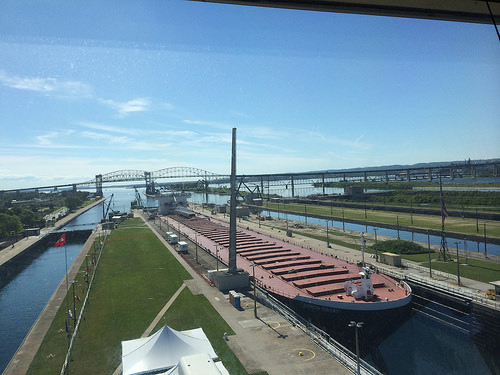
Through the Discharges from Vessels Annex of the 2012 Great Lakes Water Quality Agreement, Canada and the United States have committed to:
“… preventing and controlling vessel discharges that are harmful to the quality of the Waters of the Great Lakes, through the adoption and implementation of regulations, programs, and other measures that facilitate coordinated and cooperative implementation and enforcement, where appropriate.”
Key Commitments
Canada and the United States agree to prevent or prohibit harmful discharges from vessels by:
- Preventing the discharge of harmful quantities of oil or hazardous polluting substances;
- Prohibiting the discharge of garbage;
- Minimizing the discharge of cargo residues;
- Prohibiting the discharge of harmful amounts of wastewater;
- Controlling the discharge of sewage;
- Preventing the release of harmful aquatic invasive species and pathogens as a result of accumulation of microorganisms, plants, algae, or animals on ships;
- Preventing harm from anti-fouling systems;
- Preventing the discharge of aquatic invasive species in ballast water;
- Ensuring adequate facilities for receiving, treating and disposing of vessel wastes; and
- Reviewing relevant shipping activities to maintain or improve Great Lakes water quality.
For additional information on the focus of actions under this Annex, consult the current Priorities for Science and Action 2014-2016. The Priorities are based on an evaluation of the State of the Great Lakes, with input from the Great Lakes Executive Committee, participants at the Great Lakes Public Forum, and recommendations of the International Joint Commission.
Every six months, progress on this annex is reported at the Great Lakes Executive Committee meetings. Accomplishments will be described in the Progress Report of the Parties every three years, with the first expected in 2016.
Implementation
Implementation of this annex is co-led by Transport Canada and the United States Coast Guard. Additional participants include:
- Fisheries and Oceans Canada
- Indiana Department of Environmental Management
- Ontario Ministry of Transportation
- United States Environmental Protection Agency
- Wisconsin Department of Natural Resources
An extended subcommittee involves additional organizations and experts beyond the GLEC membership.
